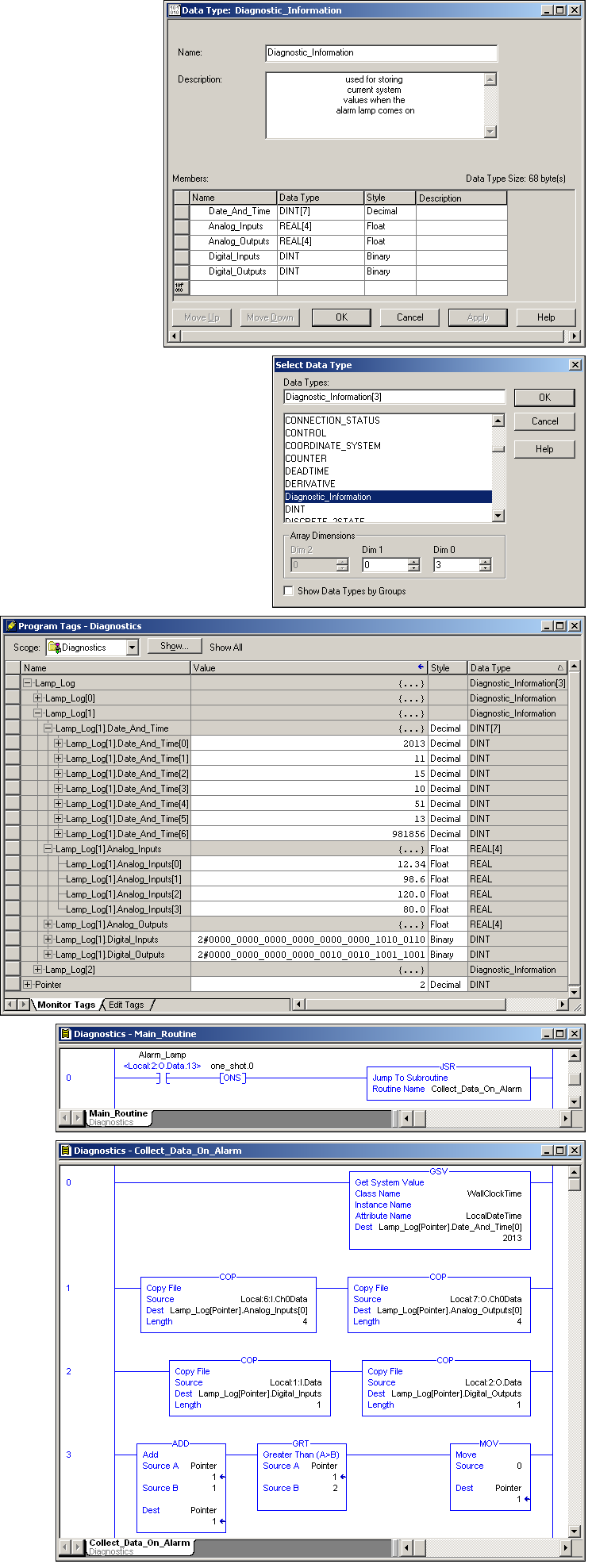User-Defined Data Types
User-Defined Data Types – do your systems use these?
 This feature allows a programmer to create entirely new data structures by combining different types of data into one new construction. As shown in the first screen shot, notice that DINT arrays, REAL arrays, and basic DINT type data have all been incorporated into the new “Diagnostic_Information” data type.
This feature allows a programmer to create entirely new data structures by combining different types of data into one new construction. As shown in the first screen shot, notice that DINT arrays, REAL arrays, and basic DINT type data have all been incorporated into the new “Diagnostic_Information” data type.
As shown in the second screen shot, once the new data type has been defined it will appear in the list along with other existing types of data whenever a new tag is being assigned.
And like every other programming technique which gives more power and flexibility to the programmer, the tradeoff is that user-defined data types have the potential for causing confusion for maintenance technicians who lack sufficient training.
This is a very commonly used feature, so we have the hands-on exercises necessary to bring you up to speed on how to deal with the programmer’s latest user-defined creations.
